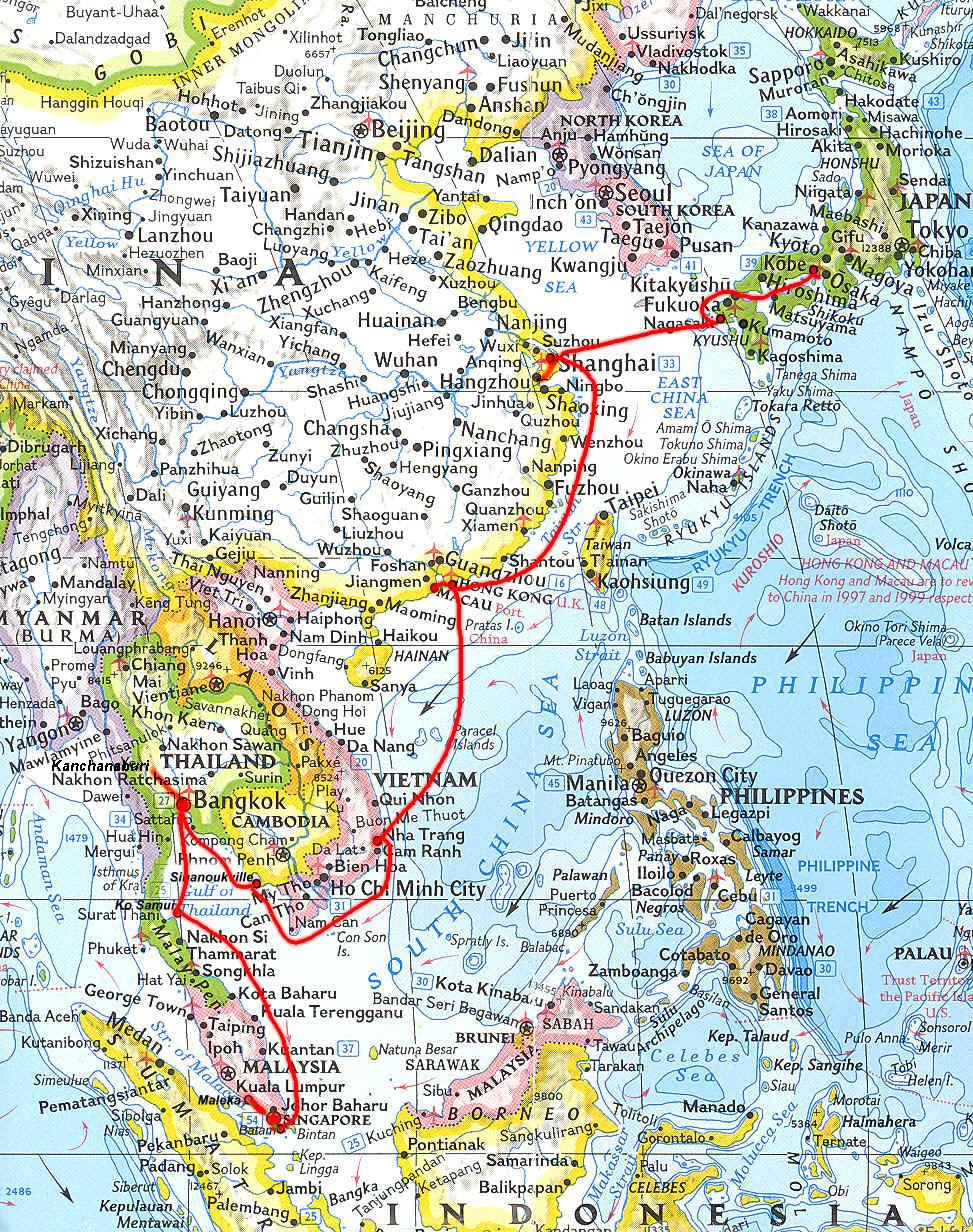
Far East Asia - April/May 2011
MS Volendam - Holland America Lines

Itinerary
11-14 April, 2011
SINGAPORE
12 April, 2011
BATAM ISLAND, INDONESIA
13 April, 2011
MELAKA, MALAYSIA
15 April, 2011
AT SEA
16 April, 2011
KO SAMUI, THAILAND
17-18 April, 2011
LAEM CHABANG/BANGKOK, THAILAND
19 April, 2011
SIHANOUKVILLE, CAMBODIA
20 April, 2011
AT SEA
21 April, 2011
NHA TRANG, VIETNAM
22 April, 2011
AT SEA
23-24 April, 2011
HONG KONG S.A.R.
24 April, 2011
MACAU S.A.R.
25-26 April, 2011
AT SEA
27-28 April, 2011
SHANGHAI, PRC
29 April, 2011
AT SEA
30 April, 2011
NAGASAKI, JAPAN
1 May, 2011
AT SEA
2 May, 2011
KOBE, JAPAN

Singapore is an independent country in the Malacca Straits. It was originally under various sultans until the early 19th century when the British took it over. At first, it was part of the British Straits Settlements, then part of Malaya under the British. After World War II, it wanted independence which was granted in 1957. After a few years separation from Malaya for economic reasons was supported by Malaya because they were concerned that the overwhelming number of Chinese Singaporeans would destroy the Malay dominance of Malaya if it became part of independent Malaya. It gained independence in 1959. bw
Singapore is located just south of the Malayan Peninsula, about half mile across the Johore Strait, and about 10 miles north of the Riau Archipelago of Indonesia. It is a bustling city state with a population of around 5 million people with around 3 million being actual citizens. It is multi-cultural, being about 75% of Chinese ethnicity. It is a major Asian commercial center.
We flew into Singapore on Delta Airlines, where ship was in drydock undergoing periodic maintenance.
Singapore is a great city, very modern, very clean and very expensive. There are some of the most modernistic building architecture that I have ever seen. The city has stiff fines for offenses ranging from gum chewing to tax evasion. An example of the latter is leaving Singapore to go to Malaysia, there are signs showing a car's fuel gauge at ¾ full with a notice "Fine $500." Gas is about S$2.10+ per liter in Singapore but only 80 cents in Malaysia! The currency is the Singapore Dollar which is equal to about 70 US cents.
The population is very varied: Malays, Chinese, Indians, other Asians and some Caucasians. Signs are all in English, Chinese, and Hindi. Interestingly, street names mostly reflect the colonial past as we saw roads named after King George VI, Mountbatten, and even Clemenceau. Most roads have English names. The city has a large commercial area with huge multi-story office buildings.
We stayed at the AQueen Hotel on Lavender Road in downtown Singapore. It was a clean Indian-owned hotel for a reasonable price. Breakfast is included (supposedly "Bacon and eggs" but never had any pork products, only "chicken ham," "chicken sausage"). They have a restaurant that closes early and sells only chicken dishes, no beef, no pork. I felt like telling them that we Georgians worship chickens so they should not be serving that as food! I ordered 2 beers to take to the room just before the restaurant closed as the desk said that was the only place to get food or beer in the area. It was $15 (about US$12) for 2 12 oz. cans of beer.
I asked if there was a convenience store around there to get a sandwich at they said there was a 7-11, just go through the 24 hour food court on the next block! We went over there. The food court was all Asian, mostly Chinese with one Korean place. There were about 20 food stalls, all brightly lit up with tables in the center of the building. The place was packed! Mostly Asians but a smattering of Europeans. In the center was a drink stand selling ice cold beers in 633 ml. bottles, about 24 oz. for only $6. The local brew is Tiger which is excellent. Many of the waitresses were young pretty Chinese girls. One older one took a liking to me, I guess she liked the tips I gave her. She was a pretty rough looking older gal, someone I would expect some of "Beer and BS' group buddies to really get in heat over!
My buddy Vic said we had to go to the old Raffles Hotel (I'd heard of the place back in my Navy days in the 1950s) and visit the Long Bar. we did. I had 2 Tiger draughts and Marilyn had 1 Heinikens draught and it only cost us S$57 (about US$45)! Vic is careful with his money so I don't think he would buy a beer here anymore!
Lavender Road from or hotel window -- Singapore thoroughfare
Architecture (right are three tall buildings capped with a ship-like structure in the harbor area)
Looks like the low bidder won this project!
Raffles Hotel Long Bar with an unidentified patron having an expensive glass of Tiger Beer
Lavender Road Food Court
==============================================================
Batam Island, Indonesia

Batam Island is one the Riau Islands. It is about a one hour ferry ride from Singapore. It used to be a fishing community but is currently being redeveloped into a tourist center with shopping and gambling to draw Singaporeans and others with prices much less than Singapore.
We took the Batam-Fast ferry across (about a 45 minute trip). the number of ships anchored off of Singapore was unbelievable! About half way across we saw three ships with large crains on them along with a couple of large barges piled high with stuff. It appears they were recovering a wreck out there.
Upon arrival, we had a purchase a VOA (Visa on Arrival) which costs US$25 each. The immigration guy tried to talk us into staying at a hotel there so they push for tourist dollars. They use the Rupiah as currency with US1 equaling 8400 Rupiah. We hired a cab and went to lunch at a seafood restaurant called the Golden Prawn which was several miles from the port of Batam Centre. I had seen a review of it on the internet. It was quaint, built out on two piers into a pond teeming with fish. We had a plate of prawns (really small shrimp) in an excellent spicy chili sauce and a plate of vegetables. I had 2 633 ml. Tiger beers and Marilyn had acoke. The total bill was 89,000 Rupiah (about US$10)!
On the way we passed through many small Indonesian towns which reminded me of the Philippines in the 1950s. Lots of traffic though mostly with motor scooters or motorcycles. I took a lot of movies on the way out and back. When I get home, i will clip some of the frames and post them here to show more details.
Golden Prawn No. 933 lunch
Mosque in Batam Centre
==============================================================
Melaka, Malaysia
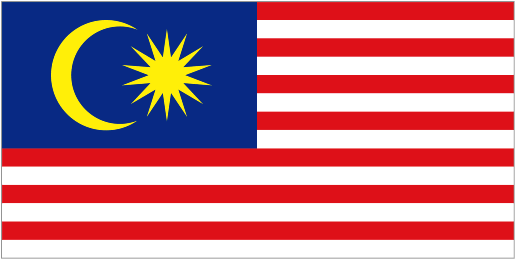
On Tuesday the 13th we took a bus tour to Melaka. It was an ancient Malay outpost. In Colonial days it was known as Malacca. It was first taken over by the Portuguese in 1511. St. Francis Xavier preached there during the mid-1540s and was interred here after his death until his remains were moved to Goa in India. In 1641 the Dutch allied with Johore took control of the city. It was ceded to Great Britain in 1824 in a land swap. It was first governed by the British East India Company but later became part of the Straits Settlements. When this colony was disbanded it became part of Malaya. It is a tourist mecca with many buildings of the various occupying authorities.
Malaysia is a Federation of Malay States plus two other former British Colonies of British North Borneo (now Sabah) and Sarawak on the island of Borneo. The currency is the Ringgit which equals about 30 US cents.
We get to Malaysia via the Causeway between Singapore island and the city of Johore Bahru which is the capital of Johore State. we then drove up the west coast to Malacca which is about 150 miles from Johore Bahru.
In Johore Bahru we stopped at a pewter factory to see how pewter was made. The mix 97% tin with about 3% copper with a trace of antimony. We saw the melting and alloying of the metals, the forming of items, and the hand work involved in finishing the items.
The drive was mostly through groves upon groves of Palm Oil trees. Malaysia is now the biggest producer of palm oil whose derivatives provide everything from cooking oil to soap. The fruit is cut from the trees on the ground by long handled sickles.
Rubber production is now the second biggest crop placing Malaysia as the number three producer. The rubber trees are slashed at a steep angle from left top to right bottom and buckets accumulate the sap which is about 75% water and 25% latex. After about 4 hours the tree cures the slash to protect itself. The trees are milked about every three days. Our guide said that it is mostly used to manufacture "family planning aids."
The government now plants a variety of teak trees along the right of way as they need no maintenance. After 30 years, they are cut down for the valuable wood.
Jungle covers most of rest of the country from about a mile off the highway. The jungle is home to tigers, elephants, bears, and many other animals. Some of the indigenous people still live in the jungle having learned how to coexist with the animals. Our guide said only 8 people are killed a year by tigers but 1,000 people are killed by Tiger Beer!
When we entered Melaka, we stopped for a buffet luncheon at the Hotel Equatorial. They had a nice selection of entrees and desserts. The lunch was part of the tour package which was only S$80 per person.
After lunch the bus dropped us off on Jonker Street (Dutch for Gentleman). There were a lot of colonial era buildings in the area. We then walked up towards the square stopping at the oldest Buddhist temple called Cheng Hoon Teng in Malaysia. Temple. We were permitted to wander around the grounds and take photos wherever we wanted. After that we walked by the Tranquerah Mosque which is the oldest Mosque in Melaka.
We then walked up to the square where we visited the Christ Church Melaka which was built in 1753 as a Dutch Reformed Church. After the Brits took Malacca over, the consecrated it as an Anglican church which it still fuctions as today.
After that we walked up 94 steps to a hill where the ruins of St. Paul's church stands. This was founded by St. Francis Xavier and he was buried here after his death. There are a number of Dutch gravestones on display that we found near the church.
We are glad we took the trip because we got to see a lot of countryside and learned a lot about Malaysia.
Creating pewter alloy and fabricating/finishing items
Malaysian home and a business
Cheng Hoon Teng Temple
Bicycle rickshaw -- Tan Beng Swee Clocktower
St. Paul's Church - Dutch tombstone from 1660
Melaka from St. Paul's -- Gate to Fort A Fomosa (1511)
====================================================================
Ko Samui, Thailand
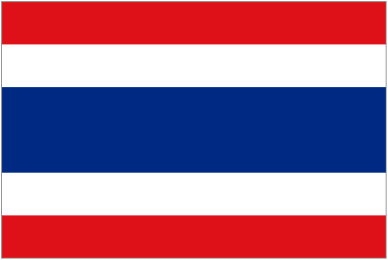
Ko Samui is an island off the east coast of Thailand about halfway up the coast. The island was remote, even without roads until the 1970s. It still has the wild flair to it though it is being developed for the tourist trade. They export rubber and coconuts. Cruise ships started visiting here in 2008 affecting the once rural lifestyle.
As we departed the ship we had to run a gamut of taxi drivers and guides trying to get our attention and business.
We along with six others hired an air conditioned van to drive us around the island for 4500 Baht (US$150 total) for about three hours. The driver recommended stops but also stopped wherever we wanted for photos or short explorations. The island is not as developed as we thought from the description given on the ship. The area still has a rural air to it which is nice.
Our first stop was a cascades at Na Muang Waterfalls. They offered elephant rides up to the falls but we decided to walk as our Bangkok tour includes a stop at an village where we are able to ride elephants.
Next stop was at a shrine for the Mummified Monk who died in 1973. His mummified corpse is incased in a glass container. He is sitting in the meditated position in his saffron robe wearing a pair of sunglasses!
Then we proceeded down to a beach area at Lamai Bay where Grandfather (Hin Ta) and Grandmother (Hin Yai)n Rocks are located. Lots of people visit the site to view the unique natural granite formations that were created by water action. Local legend has it that an elderly couple were going to see a local chief to see if their son could marry his daughter. Their boat capsized and they were killed and their bodies washed ashore and only their sexual organs can be seen today.
Next stop was the shrine of the Golden Buddha. This statue stands 36 feet in height on the top of a hill and appears to be made of gold but it is actually colored to look that way. There was a chapel to the left where we observed a monk conducting a service with a number of people praying and burning incense. There were a number of monks doing various things at the shrine. Normally, one has to remove his shoes when entering a shrine but this one had a sign that read "Hot floor can use your shoes on steps 10:00-1600."
Marilyn and friend - Buddhist shrine at waterfalls
Na Muang Waterfalls
Mummified monk shrine
At Grandfather and Grandmother Rocks
Beach scenes on Ko Samui
Golden Buddha -- Monk conducting service
Golden Buddha -- Monk
==============================================================
Laem Chabang (Bangkok), Thailand

Laem Chabang is the port access to Bangkok, which is the capital of Thailand. The ship spent two days here with most of the people traveling to Bangkok. We joined three other couples to take a two-day trip to Kanchanaburi, a town in southwestern Thailand near the Myanamar (old Burma) border. They were Cathy and Mark Cohen from California, Rob and Jeanie Dunkley from New South Wales, aqnd Paul and Vicki Poecker who are from Missouri originally but now spend their days on cruises all over the world.
We left the port at 09:00 for the approximate four hour trip to Kanchanaburi. The first day a Sunday was Thai New Years so traffic was light. We made good time through Bangkok and picked up a toll road to the west. I was amazed at the the number of placard-like displays and monuments to the Thai royal family. The current king, Bhumibol or Rama IX, is 84 years old and has been hospitalized for about a year. These shrines are often decorated with the Thai flag as well as yellow (the King's) flag and orange (the crown prince's) flag. Our guide said that the Thai people are split between pro-monarchy and anti-monarchy people, with the former clearly the majority.
We stopped near Kanchanaburi for lunch at a nice Thai restaurant called Cafe de Phuphya. The cuisine was a selection of Thai delicacies served, fortunately for me, with white rice which was the preponderance of my meal due to my fastidiousness with food. I am a "meat and potatoes" man not interested in trying exotic things unless I know exactly what's in it. I did enjoy a large Singha beer though with my rice.
After lunch we traveled on to the Tiger Temple. This is an active Buddhist monastery where the monks raise tigers from babyhood. The tigers are sensitized to people so you can sit along side them and stroke them. There is quite a walk to a deep canyon where most of the tigers are. It was hot as blazes with little shade and the walk really sapped the energy of this older couple! They re chained by a short chain but they are not fazed by humans. You cannot wear hats are shiny or colorful things because the tigers think they are toys and may get frisky. The keeper takes you to each of the animals where he photographs you with the animal. The tigers are in a near slumber state, (I don't know if it's the heat or whether they are sedated). The monastery also has other animals as you walk through it including water buffalos, deer, and so on.
After that we proceeded towards Kanchanaburi where we stopped at an elephant village. We rode elephants and then some of us who had bathing suits with us bathed them in the river Kwai (we filmed the bathing). The elephant ride went down a road by some farms and along byways through small villages, and a lot of jungle area. My mahout was a racer at heart, starting back in the pack but before long we were passing the other elephants until we were in the lead. A the conclusion of the ride we went down in the river. The mahout would say something and the elephant would dip his trunk into the water then curl it back towards us and shower us. It felt great in the heat of the air!
Next we headed into town and checked into our hotel, the Sabai Kan Resort. On the way, we were doused several times by groups of mostly young people celebrating New Years Day. This is an annual ritual here. Some even splash cars or scrub them with wet talcum powder. The hotel room was spacious and very clean and very hot when we arrived. They use the same trick that many European hotels use now, that you have to insert the room card key in a wall receptacle in order to get power, lights, and air conditioning. As soon as you remove the card key, the power shuts off so I removed the room key from the card so that the room would cool while we were gone. The room had the usual visitor card though this one started: "These are illegal and prohibited by Thai Law - No drug - No prostituted - No gambling."
After cleaning up we proceeded to visit the bridge on the River Kwai (the one in the semi-fictional movie was of wood constructed by the Japanese occupiers using Allied POW labor during World War II but blown up by British commandos shortly after it was completed). The bridge was built to link Bangkok with Rangoon for logistic purposes. The story of the famous movie "Bridge on the River Kwai" which was actually filmed in Ceylon in 1957 was a fictional account of an incident that actually took place here in Kanchanaburi. The actual bridge built by Allied prisoners and conscripted Asians was constructed of steel and concrete. The half round side structures are part of the original bridge. The bridge was bombed by the US Air Corps late in the war. The square sections in the middle are replacements provided post-war as Japanese reparations. We walked across the bridge on the rails. Kanchanaburi is a very active community today, in World War II, it was all jungle.
We then proceeded to dinner at The Floating Restaurant adjacent to the bridge. All the others had traditional Thai food but I was able to order off the menu so I had fried chicken, french fries, and garlic bread. All we males had large Singha beers while the ladies had a pinapple crush drink which all agreed was excellent.
The next morning we had breakfast at the hotel. I was able to have an egg with ham and toast. After that we checked out and headed for Bangkok to visit the Grand Palace and the Wat Phra Kaeo (Temple of the Emerald Buddha, one of Thailand's most revered spots).
On the way towards noon we stopped for lunch. Again our guide Amy ordered Thai traditional food but I was able to order from the menu. I saw an item called "Spicy and chilli fresh shrimp" so I thought "I can handle that" so I ordered it. Amy asked if I was sure as she said it was "local style food." The small shrimp pieces were in a red broth. I immediately dipped in and picked out a piece of shrimp with a small red pepper. The taste was excellent so continued to eat but soon I felt as if my mouth was on fire. I quickly finished my large (630 ml.) Singha beer. Fire was still there so I ordered another beer and meanwhile drank most of a bottle of water. After the second beer, the fire was out! I love hot spicy food but this was at least an order of magnitude hotter than anything I ever ate in the States.
After lunch we headed to the Grand Palace. This complex is very beautiful with many ornate buildings. It was built by Rama I starting in 1782. It is no longer the royal residence but is still used on ceremonial occasions. We walked through the entire complex exploring many of the buildings that are open to the public. The Emerald Buddha temple is located. We were able to enter but had to remove shoes and hats and all photography is prohibited. As we entered we were ushered into the vestibule and asked to sit on the floor. Many Buddhists were there praying in the crowd. The temple is very beautiful and ornate with much gold and many jewels.
After that we headed back to the ship arriving about an hour before the scheduled departure time. This was a very interesting trip with all we saw and were able to do. It was well worth the modest cost (Cathy Cohen arranged the tour with Bangkok Day Tours, a company that I would highly recommend if you visit Bangkok).
Monuments to royal family
Lunch at Cafe de Phuphaya
Entrance to Tiger Shrine -- Boar rooting
Playing with tigers

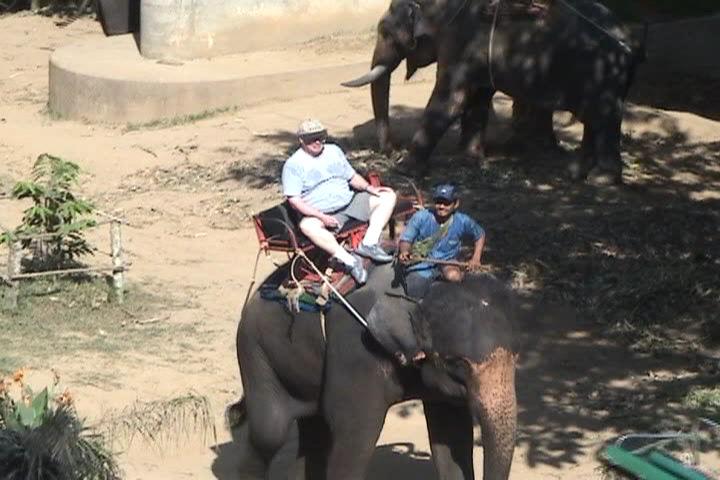
Riding elephants in Muang Sing
Group of Thai youth celebrating New Years -- Elephant washing in River Kwai
Bridge on the River Kwai
Dinner at the Floating Restaurant in Kanchanaburi
Bangkok - Grand Palace
Grand Palace in Bangkok
==============================================================
Sihanoukville, Cambodia

Sihanoukville is Cambodia's major port. It is named after King Norodom Sihanouk who ruled Cambodia from 1941 to 1955 when he was deposed by the Khmer Rouge. He was reinstated in 1993 and ruled until 2004 when he abdicated in favor of his son, the current Cambodian ruler.
During the terrible Khmer Rouge days, the city was renamed Kompong Som. The SS Mayaguez, a United States merchant vessel was seized by the Khmer Rouge and was incarcerated near here in 1975. The US launched a recovery operation. It was the last battle of the Vietnam War. Three captured Marines were held here, humiliated, and executed by the Khmer Rouge.
The city is now Cambodia's major seaport and is famous for its beaches (and is where the Angkor Beer is brewed). You can rent bikes and motorbikes to ride around the city but local law mandates a fine of 4,000 Riels for not using a helmet. The locals say that you can avoid the fine by riding between 11AM and 2PM when the police are sleeping or at lunch!
We arrived early in the morning. There was an old fishing village in front of the Volendam. Families live on these small boats. This was very common in Hong Kong and Taiwan in the 1950s so it was nice to see that this tradition lives on in Cambodia today.
The port is actually 5 km. from the city's marketplace so there were complimentary shuttle buses available from and to the ship.
The day was warm with sea breezes which made walking much more enjoyable than it was in very hot Bangkok. On the way to town we were surprised by the number of Lexus cars we saw, including one with Kentucky license plates! As we departed from the bus, we were swarmed on by many many jitney drivers offering to transport us to around the area, sell postcards, etc. As usual I said "later." They then put there little finger out to touch your little finger and said "promise?"
We and another passenger, Alice from Chalapa Mexico, hired a jitney driver. These jitneys are a two seat cart with a covering attached behind a small engined motorcycle. The easily seat four and rent for $15 for a trip that lasts a couple of hours. We went through residential areas that had large homes obviously from French colonial days but most are small huts. We also went through a jungle area where we could see monkeys playing in the trees.
There are many new large hotels and resort complexes but overall, Sihanoukville is still not modern by any stretch of the imagination. One sour note was the piles of garbage on the streets (perhaps this day was the pickup day). As you ride through the countryside, you see numerous small family-manned stands selling various things I remarked that it is difficult to see how families can sustain themselves with so much competition around.
The people are poor but are spirited. We saw or heard no reports of pickpocketing,. The people are happy and friendly and have limited English. The sellers expect to be bargained down and all things can be bought at bargain prices compared to other Asian cities. The local beer, Angkor, is very good and you can purchase a cold one at a stand for US$1.
The central market is huge with many stalls selling everything from produce to gold jewelry. The produce stalls were very well stocked with fruits and vegetables, some recognized but many unknown to us. They had stalls where craftsman were making jewelry, others with women embroidering clothing on old sewing machines. They were food stalls were women were cooking on charcoal braziers. The smells were mostly pleasant except one area that smelled like rotten fish.
Spirit houses are found in Southeast Asia. People who buy property install these spirit houses on the property for the spirits of previous owners.
Sihanoukville is neat to visit as it is reminiscent of the Asian towns I visited 50 some years ago while in the Navy.
Fishing village
Downtown Sihanoukville
Monkeys in trees -- Monument
Our jitney -- View from cart looking forward
Beach scenes
Street scenes
Spirit house -- Enjoying a Angkor Beer
Market stalls
====================================================================
Nha Trang, Vietnam
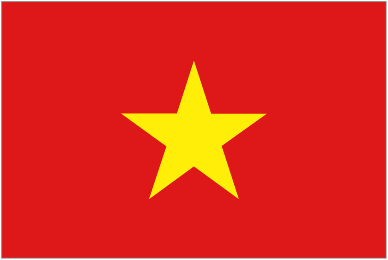
Nha Trang is a coastal city just north of the old USAF Cam Ranh airbase. It is located on one of the most beautiful bays in the world.
It is a very clean but busy city. It is very modern with new buildings but much of the city is still old Asian with many many small shops, stalls, and tea/soda/beer booths.
We hired a driver and a guide for the day. They met us at the Oceanographic Museum which is just outside the main gate to the port area. We had an air-conditioned SUV. We were joined by three Canadians, Paul and Barb Thorburn and her sister Pat.
Looking at everything around, you wouldn't think that this is a communist country but it is. There are "patriotic posters" and billboards all over the place, most with the hammer and sickle and a few with Ho Chi Minh. I asked the guide whether the government owned the land that has homes and farms and he said the plots are privately owned. Our guide said he was born in 1979 and didn't know anything about the war fought here.
First stop was at an embroidery factory right in town. There were numerous ladies working solo or in groups of two to four to eight embroidering a single item. It is something to see a group of 6 or 8 working on one piece with 2 or 4 on each side. How they keep track of the detail they are working on in conjunction with the others is beyond my comprehension. They demonstrated the whole process from the pencil drawing, poking it with holes on top of the cloth to be embroidered, then doing the actual work. Their work is truly amazing, the finished products look like paintings, the work is so fine. All the sales ladies are dressed in beautiful local dress. The prices were reasonable with framed 1' by 1' items going for about $50 and large 2' by 2.5' ones going for $100 to $200 depending on the amount of stitchwork on the piece.
Next we headed across the Cai River into the countryside. We drove through a lot of small streets with small homes. We finally arrived at an open house where a single family makes "sticky noodles." There were the mother, a son, and two daughters working (the men here seem to sit around in small shops drinking tea in glasses and shooting the bull). They take the rice, shuck it, then let it soak for two days before making it into rice flour and ultimately the noodles. Each person has their single job. The rice flour is then made into a paste, then heated on the hearth, then poured into the noodle maker. The noodles are then cooked in hot water, and finally laid out to package. The noodles are made daily as the day's production has to be used that day. They produce hundreds of kilos of the noodles to sell to restaurants and consumers. The fire is made from burning the rice husks. These people were very industrious working at a fast pace. They had a pet monkey chained to a tree outside who scampered all over the place.
In the same neighborhood we next visited a place where they make rice paper. They make a paste of rice flour then feed it through a large machine where the rice paper is formed in sheets about 4 feet wide. As it comes out of the machine it is laid unto wooden frames and cut the length. The room was very hot as the machine burns logs to heat the flour mixture and lay it out. Women then carry the wooden frames outside to set in the sun until dry.
We rode a short distance and stopped at a rather primitive looking residence. We went in and the 61 year old widow makes coolie hats from reeds to support her 9 children. She sells them for $3 each and produces as many a day as she can.
We left there then headed over to a farming area where they raise rice. They can grow rice 10 months a year there (only missing October and November because that is the very wet season). The rice is ready for harvest in 3 months time.
Then we stopped at a 200 year old Vietnamese house that we were able to walk through. Afterwards, the hostess provided us with various local fruits to enjoy while most of us drank green tea (a couple of us had a "333 Beer" which is made in Saigon). The house has a living area, a small Buddhist shrine room, the men's room where the males sit and sleep and the women's room where the females stay and sleep, and a kitchen. The house had beautiful gardens and a sitting area outside where we ate the fruit. There was another group visiting at the same time and we overheard their guide spotting pro-communist propaganda such as "the north liberated the south," etc. (he would fit in well in many US universities).
Next stop was another open building next to a stand where the men gather while their women work. Inside the building there were two women weaving reed mats on a rudimentary loom. One feeds the various colored reeds into the loom on a stick then the other moves the loom tool. They sat Marilyn down to run the loom so now she has another trade that could support her if she chose to stay in Vietnam. They sold the mats there with the small ones 1' by 1' going the $3 up to the large about 3' by 6' for $10.
We then went to a Buddhist orphanage where they care for 100 young people from a few months old up to 16 years old. It was a very beautiful pagoda and shrine. The orphanage was built in 1988 and is privately operated.
After this busy day, we stopped at a floating restaurant for lunch. I was able to try most of the plates as they included tasty but chewy beef, breaded shrimp, as well as fish that I passed on. The others thought everything tasted great. After lunch we boarded a small boat that carried us down the Cai River to the Cham Temple.
The Cham people were the original inhabitants of this area of Vietnam. They now mostly live in the mountains and are just one of the many minorities in the country. The temple is quite old, about 1000 years old.
After this we headed to the marketplace for a bit of shopping.
The overwhelming percentage of the people travel by motorbike, the streets are very crowded with them. We noticed many young girls on them with masks over their face, long sleeves, and gloves which seemed unusual in this hot climate. Our guide told us that they do that to keep themselves as light as possible. He said dark skin is considered "dirty" and the sign of a field hand or farmer whereas light skin connotes success, an office worker.
Overall, Nha Trang was a great port.
Propaganda poster
Embroidery saleslady with Marilyn -- Embroidery teams at work
Example of embroidery -- Salesladies
Sticky noodle production line
Rice paper manufacturing
Coolie hat making
Rice field - dark green is young, light green is ready for harvest
Old Vietnamese house (outside)
Old Vietnames house - Buddhist shrine and living room
Old Vietnamese house - kitchen and garden area
Mat weaving and finished mats
Marilyn at work -- Husband's work
Buddhist orphanage
Lunch at floating restaurant
Boat trip on Cai River
River Cai scenes
At the Cham Temple
====================================================================
Hong Kong, S.A.R.

Hong Kong was colonized by the British in 1842 after the Opium Wars. Originally the colony was limited to Hong Kong Island but in 1898, Britain leased Kowloon and the New Territories for 99 years. Hong Kong was my favorite liberty port whilst in the Navy. Every cruise we would have a one week R&R visit here.
The British turned the colony over to the PRC in 1997. It is now a Special Administrative Region in the PRC. SAR grants the citizens more rights and liberties then the regular PRC citizens have.
Whilst in the Navy, sailors all looked forward to their annual rest and recreation visit to Hong Kong. The ship always anchored out in the harbor riding the ship's launch or water taxis into town. They would ride the Star Ferry to mainland Kowloon which was more Chinese than British-like Victoria on the island. They were paid US$84 a month with $8 sea pay in those days. Many of them visited the tailors and had suits made (while imbibing on the free beer the tailors provided). They used to have steak dinners at either Jimmy's Kitchen (still going in 2011), the Cafe de Paris (also still operating), or the Parisian Grill (no longer in operation). Phil doesn't remember the prices but they had to be cheap for us to afford them on sailor's pay. We, as enlisted men, were not allowed to wear civvies in those days but who could not help but to stroll around in our new Hong Kong tailored suits? Certainly not us. One time some of Phil's buddies and he donned their suits and took the Kowloon-Canton Railway to Lo Wu, the last station in Hong Kong before entering Red China. They hired a cab who drove them around to see the sights. They saw a lot of what we all imagined real China was. Here's a picture of Phil and two of his buddies, Don Rollinger of Louisiana and Ken Kile of Arizona, in 1959 in Hong Kong (Phil is the skinny guy in the middle).

One of the most beautiful sights in Hong Kong in those days was the waterfront at night. Here's a photo that Phil's buddy Ken Kile took in 1959 and one of today.
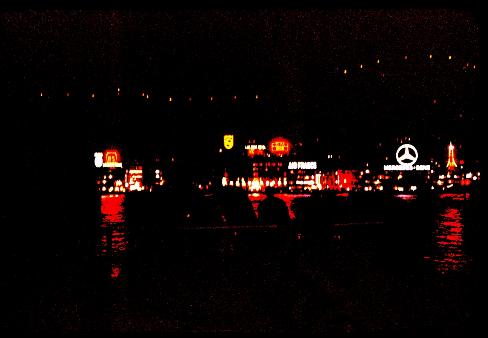
Hong Kong waterfront in 1959 from USS Picking -- In 2011 from MS Volendam
There were some fairly tall buildings in the 50s, most in Victoria. Kowloon was mostly Chinese with narrow streets and shops and stalls, few multi-storied buildings. Victoria is now called Center and looks like a forest of huge and very tall buildings. One building we saw was built on land that the developer paid Hong Kong $5 million per square meter for! Kowloon has a bevy of high end stores with famous European names. There were lines of people waiting in line to go into these stores. Hong Kong has really grown over the last 50 years!
The ship tied up at the Cruise Terminal in Kowloon. We arrived early in the morning on the first rainy day of the cruise. Everything was dismally foggy. As we came in we passed a building located just behind the Clock Tower near the Star Ferry that had a large video display with Easter eggs and bunnies and the message "HAPPY EASTER." Apparently the ACLU-scum are not active here to protest the message and sue to force the building's owners to take it down.
As soon as we disembarked, we headed for the Macau ferry terminal to visit the former Portuguese colony of Macau across the estuary from Hong Kong.
Upon our return to Kowloon, we looked for Jimmy's Kitchen, one of the restaurants that Phil and sailor buddies frequented on their R&R visits ib Hong Kong in the late 1950s. We found it at the end of Ashley Street not far from the cruise terminal. We went in and Phil explained to the hostess that he'd used to dine here as a young sailor. We were then seated for dinner. The manager came over to speak with us and Phil regaled him with tales of his Navy days in Hong Kong. We remarked about the numerous expensive western shops and the queues of people waiting to go into them. He said most of them are Chinese from the Mainland. Must be a lot of money i China today for the numbrrs of free-spending people we saw.
Jimmy's had moved to this location a few years ago from their old location on the 3rd floor of a building on Hankow Road. Phil had a 12 ounce filet mignon which was excellent, blood red on the inside but crispy caramelized on the outside. Yummy! Dinner for the two of us with wine and beer was HK$900 (about US$110) including a 10% service charge.
We then returned to the ship hoping that the weather would improve the next day.
At 20:00 each night, Hong Kong has a laser show where many of the buildings are lighted with varying colors and shooting laser beams into the sky. We went up to the Sports Deck to watch the display. It was neat but the Hong Kong waterfront is not a pretty as it was in the late 50s.
The next morning we arose early to a beautiful sunny morning. Having been to Macau, we had to return our passports to Hong Kong immigration officers on the ship at 14:00 so we decided to take a double decked sightseeing bus to tour Hong Kong Island. We took the old Star Ferry across to Central (now costs HK$3 per crossing). Part of the tour included the tram to and from Victoria Peak which offers a very good place to view Hong Kong and its harbor.
Overall, I think Hong Kong has lost a lot of its old charm due to the modernization of the former British colony.
Dinner at Jimmy's Kitchen - Kowloon
Hong Kong Central (Victoria) and Kowloon skylines
Kowloon street scenes
Star Ferry
Central (Victoria) street scenes
Tram to Victoria Peak -- Hong Kong and Kowloon from Victoria Peak
======================================================
Macau S.A.R.
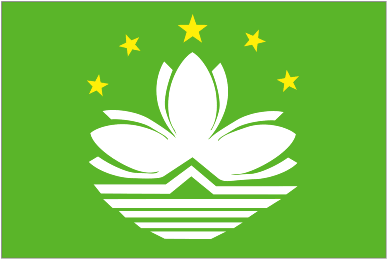
Macau was the first European colony in China being occupied by the Portuguese in the 16th century. It, like Hong Kong, was ceded in the PRC though in 1999 and is also a Special Administrative Region.
Macau has a very interesting history. Originally in the 16th century, Portuguese ships were permitted to anchor there and conduct trading but not go ashore. Later they were allowed to build sheds followed finally by building settlements. They took many Chinese youth as slaves to be sold in Europe and Brazil, preferring the work ethic of the Chinese over the lack of same of Moorish and African slaves. In World War II, Portugal remained neutral and as such the Japanese let Macau conduct its business as a neutral port for a while while Hong Kong and Kwangtung Province were occupied by them. Ultimately, the Japanese interjected themselves over Macau.
While in the Navy I tried to get permission to visit a fellow radio ham who was governor of Macau at that time but, not having a passport it was not possible. So we decided we'd make a day trip over there to see some of the Portuguese history.
Macau today is a tourist area. Largely supported by numerous casinos, many Chinese and Hong Kong visitors come to play. The casinos are huge and luxurious and numerous.
We arrived in Hong Kong on the first rainy day we had on the cruise. We immediately went to the Kowloon-Macau ferry terminal where we caught the CotaiJet ferry. The transit took about 1 hour. We disembarked at Taipa which is an island just south of Macau Island. We wanted to visit the old Portuguese part of town and asked a local how to get there. He told us to take the free shuttle bus to the Lisboa Hotel and Casino and it is only five minutes from there, which we did.
The Lisboa is a huge hotel with a shape like a golden vase. We went inside to look it over. It was plush! We then walked the streets around the hotel trying to find Senado Square, the old Portuguese section. We came upon a group of pedicabs all soliciting us to use their services. We picked one and asked him to take us to Senado Square which he offered to do for HK$120 (about US$10). We went with him. The poor guy really worked for his money, pedaling hard in the rain.
We arrived and walked around the area visiting São Domingos (St. Dominic's Church) which is just off the square.
When we were ready go, we caught the No. 3 bus which took us to the Macau Island ferry terminal for our return trip to Kowloon on First Ferry Services.
Ridding the CotaiJet ferry to Macau
Lisboa Hotel & Casino
Street Scene
Pedicab
Senado Square
São Domingos
==============================================================
Shanghai and Hangzhou, China

The ship tied up at the new Shanghai International Port Cruise Terminal near the Bund. The Bund was the center of European activity here prior to the communist takeover of the mainland in 1949. It is home to about 9 million people.
HANGZHOU
On arrival day we took a tour to the ancient city of Hangzhou (previously known As Hangchow) that we booked by internet from home through the China Travel Service in Beijing. The city was visited by Marco Polo who commented that it was the most beautiful city in the world.
We were met a the pier by a driver who took us the Hongquio Railway Station where we boarded the bullet train to Hangzhou. It took 45 minutes for the 115 mile journey reaching a speed of 344 km/h (206 mph) going and 355 km/h (213 mph) on return. The train comprised about 10 cars that were fully packed. The train was very comfortable. It rides on an elevated roadway for much of its 120 mile route. The ride is extremely smooth, you don't notice the speed except for when another bullet train passes going the other direction.
Australian friends Rob and Jeanie who we met on the River Kwai tour also went on this excursion. Our guide Jack met us at the train station and we were packed into a small van. Jack was a very nice young man who was obviously very enthusiastic about his city of Hangzhou. Jack is a tea farmer and took pride in his calloused and stained hands. He does these tours as a sideline.
Hangzhou is a very beautiful city with many gardens, tree lined streets, parks, etc. The downtown area is very clean and more laid-back and relaxing than hectic bustling Shanghai or Hong Kong. The drivers are very aggressive here, using horns to warn fellow drivers as well as pedestrians that he is coming through. The drivers often pass by going into the left (incoming) traffic lane forcing incoming cars to swerve to their right to avoid a collision. Surprisingly we did not see one damaged car in the whole city!
We stopped at the Cathedral of the Immaculate Conception, an old Catholic Church that was first built over 400 years ago. It has been opened and closed many times over history by Chinese emperors and lastly during the Cultural Revolution where it was converted to a prison. It has been restored to active church status though the Catholic Church there operates, by government decree, independent of Rome. Jack had never been in a church before so he had to research the history to tell us about its history.
We next visited the Lingyin Temple, believed to the be the oldest Buddhist temple in the area. This is a huge complex with gardens, trees, caves, and hills. There are several halls with statues of Buddha and various attendants, most of which were made of camphor root. Some of these statues are very tall and very wide. It is amazing to think that are made of a single tree root. Legend has it that it was founded by monks who flew from India. Some images are definitely Indian whilst others are clearly Chinese. Images of Buddha are carved in caves and on stone sides of the hills. Photography was not permitted inside the halls but I got a couple that I took from outside that show the size and artistry of the Buddhas inside. There were worshipers inside who kneel on cushions and kowtow and pray before the Buddhas.
Some of the images were partially destroyed by Red Guards during the Cultural Revolution. Red Guards were students who under government authorization who destroyed much of China's historical heritage. The government of wanted to wipe out the old ways thinking that religion was merely superstition and all vestiges of it needed to be eradicated from Chinese life (it reminds me of the ACLU trying to destroy Christianity in the USA). Jack commented that Phil looked like a happy Buddha (there are happy and furious Buddha depictions). He told Phil that he should give up beer and drink green tea to become slim like him.
Then we went to Meijiawu, a small village near Hangzhou. to see how green tea is grown and processed but first stopped at at a farmer's house for lunch. All of the farmers' houses fronting the road serve food as quasi restaurants. We first sat outside until it started to rain. Inside there were only two large round tables. we used one and the employees had lunch at the other. The lunch was good. It started with a chicken soup which was actually a whole chicken in a pot of broth. After that they served an omelet dish of egg and a green vegetable which Marilyn said was great. The next dish was a pig's foot for each of us (very fatty on the outside but inside the meat was tasty and succulent). Next dish was a fish from West Lake that Marilyn and the others said was superb (I passed as I do with most fish). Rob and I had beers with our lunch and all of us had green tea which is produced locally.
Next we walked through some very narrow streets passing many farmers' homes. Finally we arrived at the gate of one which was Jack's home. We went inside and were greeted by his mother and father. His father spends the day swishing the dry tea leaves in a heated metal bowl which is a process in preparing tea for sale. Jack and his father built the house themselves and it was very luxurious and modern. His wife came out to see us. They have one son who was at school. Chinese laws limit families to a single child. Marilyn asked what happens if a wife gets pregnant again. Jack said they take her to a hospital, which we guess means abortion. He said the government is relaxing this on some people. They can petition the government as Jack has and try to get permission to have a second child (Jack says they were granted permission)).
After a tour of the house we all went out to a terraced patio where Jack prepared tea for us. The leaves are put into a glass and scalding water is poured into the glass. He said that you can use the leaves 3 or 4 times. Most Chinese then eat the leaves for their medicinal value. Jack said you always serve friends a half glass of tea as a full glass means that it is time for them to leave!
He showed us three grades of tea, the best being the small leaves and retrogressing down the quality scale as the size of the leaves get larger. Their province is the top producer of quality tea with one type called Emperor's Tea as it was the favorite of one of the former emperors. Other provinces produce inferior grades. On the hillside behind them were rows upon rows of tea bushes. Women are hired to pick the tea by hand here (other provinces use mechanized methods). His father also provides meals for the pickers and he carries the food to them on the hillsides where they work. I asked if the farmers owned the land. Jack replied that the government owns all the land, people are granted use of plots to build houses and grow tea based on the number of people in the family.
Top grade tea grown here sells for RMB1500 per half kilo (about US$200 a pound). We learned a lot about tea at this visit to his home and certainly enjoyed this stop to see how they live.
After that we went to West Lake and were scheduled for a cruise on the lake but the weather changed again to rain so the cruise was cancelled. We walked around the lake area joining multitudes of Chinese. Jack pointed out a restaurant that is number 1 in the province, in fact Premier Chou en Lai had taken President Richard Nixon here for lunch on Nixon's initial China visit. While the ladies visited a WC, I was approached by a young Chinese lady indicating whether it was OK for her to take a picture of me. Of course I consented. Then she stood next to me for the picture and Rob said he would join too. I wish I had asked her friend to take a photo with our camera as Marilyn doesn't believe this actually happened. I explained that she must have admired by Buddha like physique!
We caught the 19:00 bullet train back to Shanghai, arriving about an hour later (this train was not express, there was one stop). We caught a taxi back to the ship arriving about 20:30 at the terminal. We were bushed so we had sandwiches delivered to our cabin and then retired early to get up early to take in Shanghai the next day.
The Hangzhou visit was well worth the cost (US$155 per person) including transportation to the train station, the bullet train tickets, the van driver and guide, and the lunch. We would recommend China Travel Service tour to Hangzhou as a "must" when visiting Shanghai.
Bullet Train
View from train -- Arrival in Hangzhou
Church of the Immaculate Conception in Hangzhou
Hangzhou street scenes
Lingyin Temple
Longyin Temple --Monk's tomb -- Sculptures defaced by Red Guards
Longyin Temple -- Indian style Buddhas
Buddhas in halls (made from single camphor roots)
Lingyin Temple grounds
Lunch at farmer's home
Lunch entrees
On the way to Jack's home -- Jack's father, Jack, Jack's mother at entrance to home
Jack's father processing tea leaves -- Family tea bushes
On Jack's patio -- Women picking tea
At West Lake, Hangzhou
SHANGHAI
We left the ship early the next morning. It was a beautiful sunny day but a bit cool to start off (actually a welcome change from the weather in the more southern ports).
Shanghai is a very large and modern city. The city has many many skyscrapers, often with exotic architecture. Shanghai is the commercial center of Asia, surpassing even Hong Kong in multi-national business presence. Along the river are many buildings of the old Bund European settlements peppered among the skyscrapers. The old buildings are generally 5 or 6 stories whilst the modern skyscrapers have 50 or more stories.
We took the ship's shuttle (at $15 per person) thinking we were going to Peoples' Square in central Shanghai . The driver motioned us to get off at a stop that was on the Bund, within sight of the ship. He spoke no English so we had no idea whether this was the final stop or not. We got off and walked down the Bund. There is a pedestrian causeway along the river that we walked down. There were numerous monuments and park areas. There was a huge statue of Mao tse Tung.
We finally saw a tour bus stop where one could get on and off at any or all stops. The buses have a recorded description as you proceed through the city which was very informative. One of the places they pointed out was where the first meeting of the Chinese Communist Party was held in 1921. It is now a national monument and there were scores of people lined up outside waiting to enter and view the exhibits. They also explained the Red Chinese flag, saying that the large yellow star represents the "leadership of the Communist Party" and the four small stars represent the four major ethnic groups in China. When you see all the opulence, the expensive brand name stores, the buyers swarming the streets with packages, American fast food places (Burger King, McDonald's, Pizza Hut, etc.) it is hard to believe you are in a Communist country. It wasn't too many years ago when the Red Guards roamed the country destroying vestiges of history, capitalism, and western influence.
We got off at Nanjing Road near the Shanghai No. 1 Department Store. At this point Nanjing Road becomes a pedestrian mall street. There are many top named stores as well as places like Burger King and KFC.
Shanghai at night from the ship
Along the Bund
Statues along the Bund (at right is Chairman Mao)
Shanghai transportation modes (besides autos)
Nanjing Road Pedestrian street
Paddlewheeler and MS Volendam on Huangpu River, Shanghai
==============================================================
Nagasaki, Japan
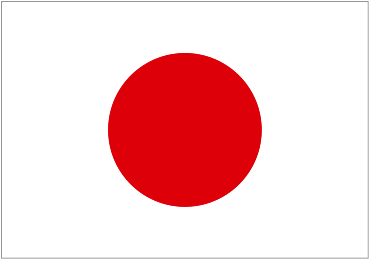
Phil visited Nagasaki in 1958 while in the Navy on a bus tour from the port of Sasebo. They visited Madame Butterfly's house and ground zero where the second atomic bomb was centered that destroyed Nagasaki and forced Japan to finally surrender. At ground zero, he also visited the Ground Zero Museum. The town was much smaller in those days, just 13 years after the War!
On the cruise we went to ground zero by local trolleys. The ground zero monument has been modified and the church ruins were still there. The area is now in a large park with newer monuments whereas in 1958 it was in a residential area. The museum has been modernized with a distinct anti-nuclear emphasis. In 1958, the museum had many relics of the bombing from the leaflets dropped prior to the bombing to relics such as a skull fused to a metal helmet.
Nagasaki is a large city but is more traditional than most other large Japanese cities. It doesn't have the glitz like the Ginza in Tokyo. It is much like the Japan on the late 1950s.
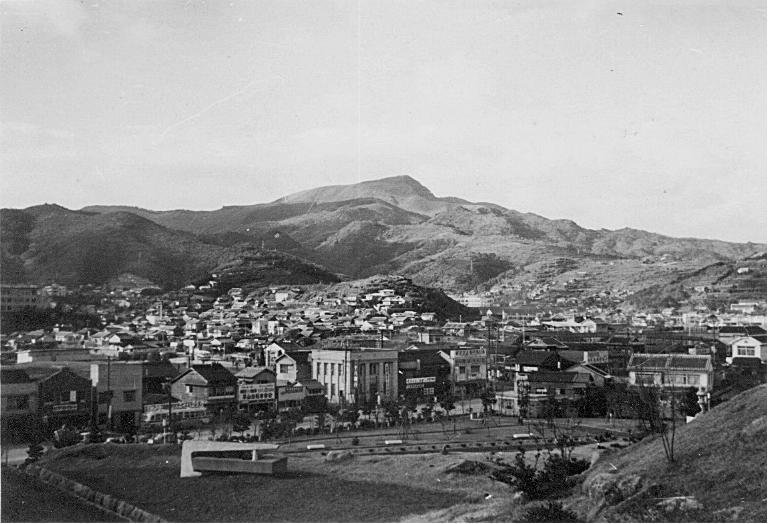
Nagasaki from Ground Zero Museum (1958) and (2011)
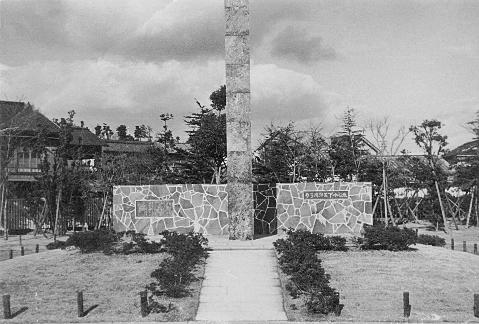
Nagasaki Ground Zero -- 1958 and 2011
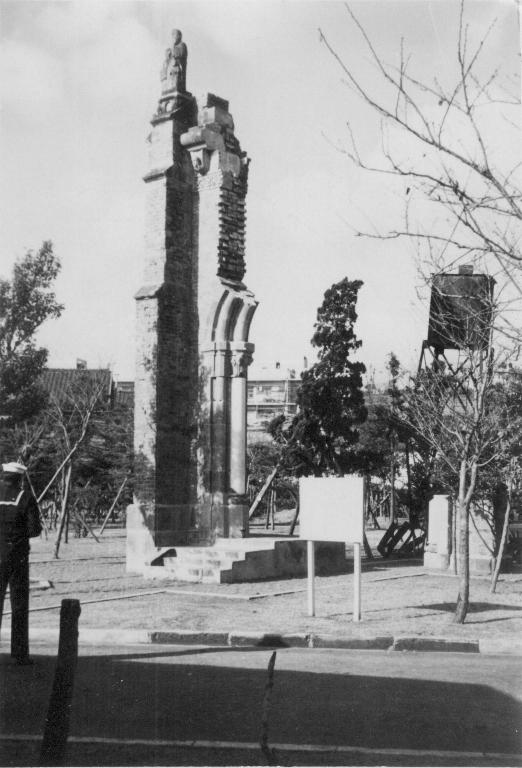
Nagasaki Ground Zero -- Ruins of Catholic Church after Atomic Bomb -- 1958 and 2011
Statue marking the date and time of the atomic bomb dropping
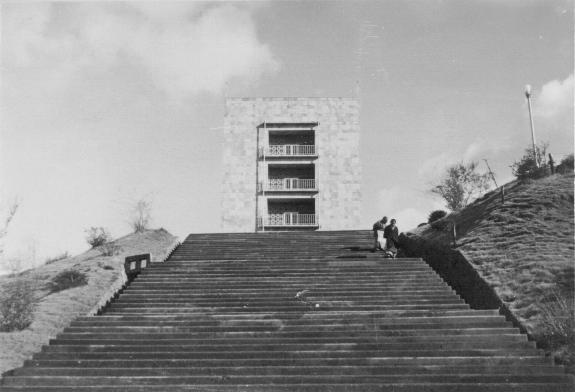
Ground Zero Museum -- 1958 and 2011
Pachinko Parlor - pachinko is a game like pinball machines that is extremely popular in Japan
Fish market and meat market in Nagasaki Chinatown
Street scenes in Nagasaki
==============================================================
Kobe, Japan

We disembarked from the ship in Kobe. We were transported by bus to Kansai Airport where we took our flight to Seattle thence to home.